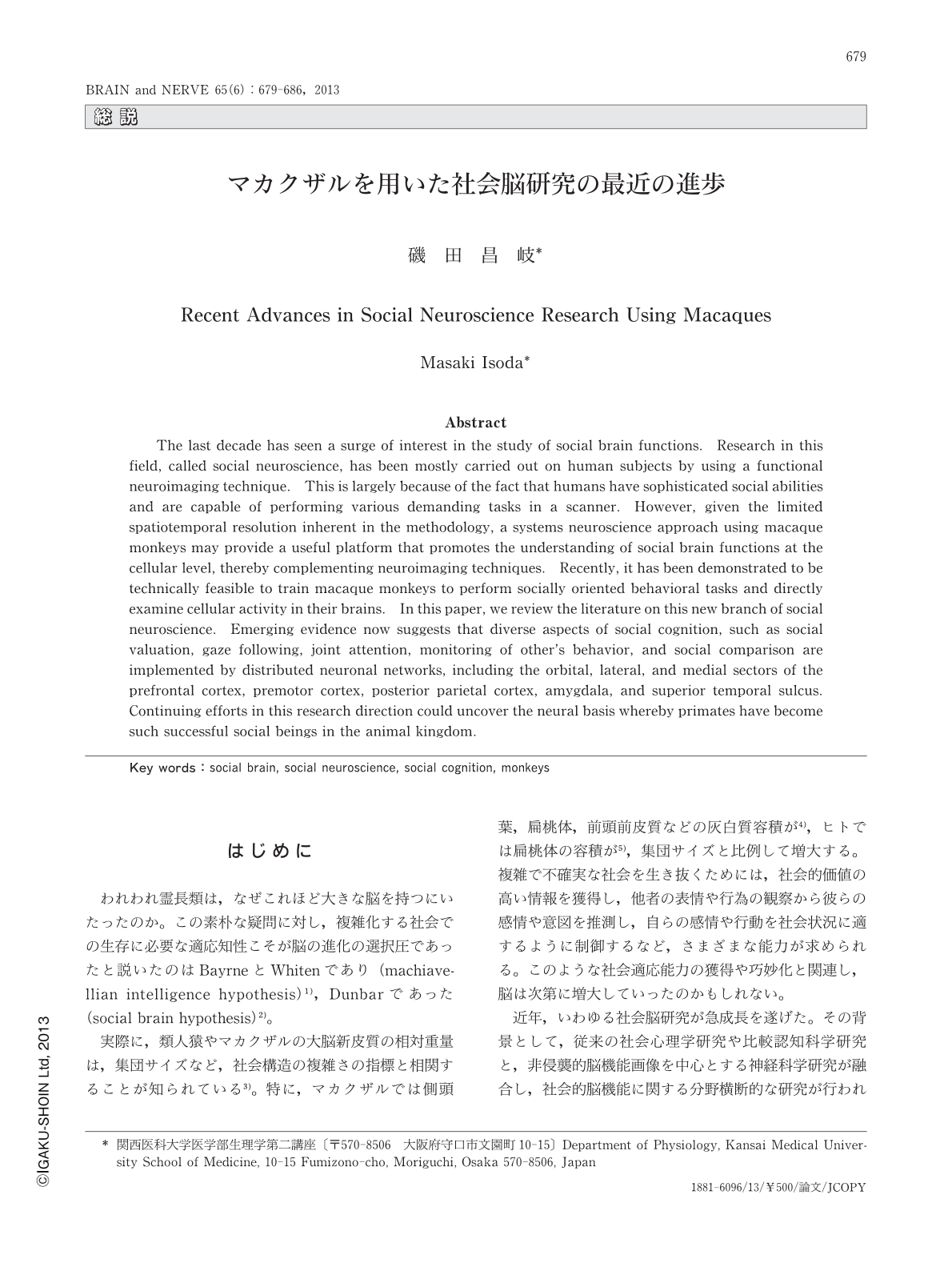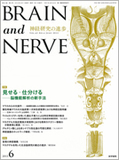Japanese
English
- 有料閲覧
- Abstract 文献概要
- 1ページ目 Look Inside
- 参考文献 Reference
はじめに
われわれ霊長類は,なぜこれほど大きな脳を持つにいたったのか。この素朴な疑問に対し,複雑化する社会での生存に必要な適応知性こそが脳の進化の選択圧であったと説いたのはBayrneとWhitenであり(machiavellian intelligence hypothesis)1),Dunbarであった(social brain hypothesis)2)。
実際に,類人猿やマカクザルの大脳新皮質の相対重量は,集団サイズなど,社会構造の複雑さの指標と相関することが知られている3)。特に,マカクザルでは側頭葉,扁桃体,前頭前皮質などの灰白質容積が4),ヒトでは扁桃体の容積が5),集団サイズと比例して増大する。複雑で不確実な社会を生き抜くためには,社会的価値の高い情報を獲得し,他者の表情や行為の観察から彼らの感情や意図を推測し,自らの感情や行動を社会状況に適するように制御するなど,さまざまな能力が求められる。このような社会適応能力の獲得や巧妙化と関連し,脳は次第に増大していったのかもしれない。
近年,いわゆる社会脳研究が急成長を遂げた。その背景として,従来の社会心理学研究や比較認知科学研究と,非侵襲的脳機能画像を中心とする神経科学研究が融合し,社会的脳機能に関する分野横断的な研究が行われるようになったことが挙げられる。また,特にこの数年で,霊長類,特にマカクザルを使ったシステム生理学的研究の中から,社会的脳機能の解明を目指すものが現れるようになった。社会的認知機能の神経機構を単一神経細胞レベルで解明することも夢ではなくなりつつある。
本稿では,マカクザルを対象として行われた電気生理学的研究と脳機能画像研究を中心に,社会脳研究の最新の成果を概説する。
Abstract
The last decade has seen a surge of interest in the study of social brain functions. Research in this field, called social neuroscience, has been mostly carried out on human subjects by using a functional neuroimaging technique. This is largely because of the fact that humans have sophisticated social abilities and are capable of performing various demanding tasks in a scanner. However, given the limited spatiotemporal resolution inherent in the methodology, a systems neuroscience approach using macaque monkeys may provide a useful platform that promotes the understanding of social brain functions at the cellular level, thereby complementing neuroimaging techniques. Recently, it has been demonstrated to be technically feasible to train macaque monkeys to perform socially oriented behavioral tasks and directly examine cellular activity in their brains. In this paper, we review the literature on this new branch of social neuroscience. Emerging evidence now suggests that diverse aspects of social cognition, such as social valuation, gaze following, joint attention, monitoring of other's behavior, and social comparison are implemented by distributed neuronal networks, including the orbital, lateral, and medial sectors of the prefrontal cortex, premotor cortex, posterior parietal cortex, amygdala, and superior temporal sulcus. Continuing efforts in this research direction could uncover the neural basis whereby primates have become such successful social beings in the animal kingdom.

Copyright © 2013, Igaku-Shoin Ltd. All rights reserved.


